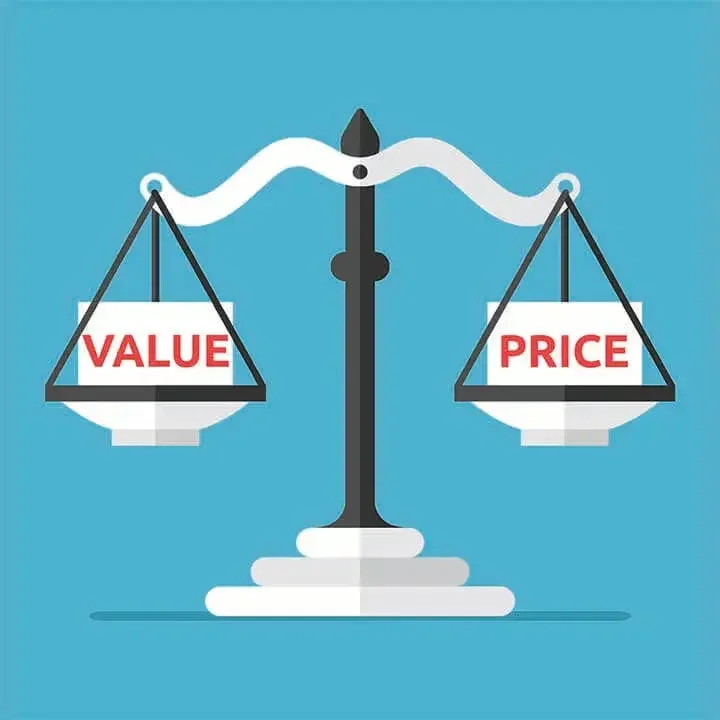For new business owners, deciding how much to charge for a product or service can be one of the most challenging decisions to make. Charge too much, and you could price yourself out of the competition. Charge too little, and you could be working for free.

When blogger Candy Keane first started selling hosiery on eBay, she was busy filling and shipping orders but soon realized she wasn't making much money. That's when she pulled out paper and pencil and started itemizing her cost of doing business. Keane discovered that her profit was about $4 for a few hours' of work.
"That was my big wake-up call to see the whole picture when setting prices," Keane says. "It's not just the price you pay for it, but everything that goes into the process of selling it."
Use value-based pricing
Including hard and soft costs—materials and time—in your pricing strategy helps ensure that every sale generates a profit rather than a loss. But whether selling a product or service, it's important to look at more than the cost of doing business when price-setting. Using a value-based pricing approach that factors in intangibles helps maximize profitability.
"It's fairly easy to replicate somebody else's product or service," says Dale Furtwengler, author of Pricing for Profit: How to Command Higher Prices for Your Products and Services. "It's the distinction created by the level of service and personal relationships that make a difference."
"Value-based pricing simply means charging what a customer is willing to pay," adds Mark Stiving, pricing consultant and host of the Impact Pricing Podcast.
Know what the customer will pay
The challenge for most is knowing what that customer will pay—and mistakes can happen, as Premium Joy toy company founder Hassan Alnassir discovered. When he priced a 36-piece foam puzzle play mat at more than $60, sales were slow.
"The item was high quality, so I thought customers would pay more regardless of competitor prices," Alnassir says. Blaming the mistake on inadequate market research, he significantly boosted sales by breaking down the 36-piece mat product into four smaller products with nine pieces each. The $20 per product price point was more in line with customer expectations.
Linda Murray Bullard, the owner of LSMB Business Solutions, had the opposite problem—she was charging too little. Early on, when one of her clients showed the business plan she had written to a consultant, that person was impressed. "When he asked how much I charged, he told my client to tell me to charge more," she says. That knowledge about her target market gave her the confidence to raise rates.
Both were wise to use what they learned to make adjustments. "Value-based pricing is a process, not an event," Stiving says. "Use new processes until you get closer to what the market is willing to pay."
Understand purchasing psychology
When setting prices, it also helps to understand why people buy. "They aren't buying products and services," Furtwengler says. "They're buying image, innovation, and time savings. They're buying because it makes them feel better about themselves or enhances their image, they're excited by the latest or greatest, or it saves them time."
Companies need to factor in another intangible when price-setting, too: perception. When customers are making a decision about which product or service they'll buy, they often take price into account. If one is more expensive, they'll think about whether it's worth the extra money.
"It's all about perceived value. What does the customer believe?" Stiving says.
Identify and communicate your value
Marketing messages need to take all of this into account.
Stiving recommends figuring out what you do better than your competitors and how much that's worth to the customer. Then add that dollar value to the competitor's price.
"Companies [may] create products and services that are better, but they won't get paid for that unless people know they're better," Stiving adds.
Don't have a value difference? Add one. That's what Yungi Chu, owner of HeadsetPlus.com, did. Chu started by positioning his products as a lower-price option, but that meant he couldn't afford to provide much support. As he learned more about his customers, he discovered that people would pay more for a product if it includes service and support. He added both and raised prices.
"If you can add value to the product, your customer won't mind paying more for it," Chu says.

